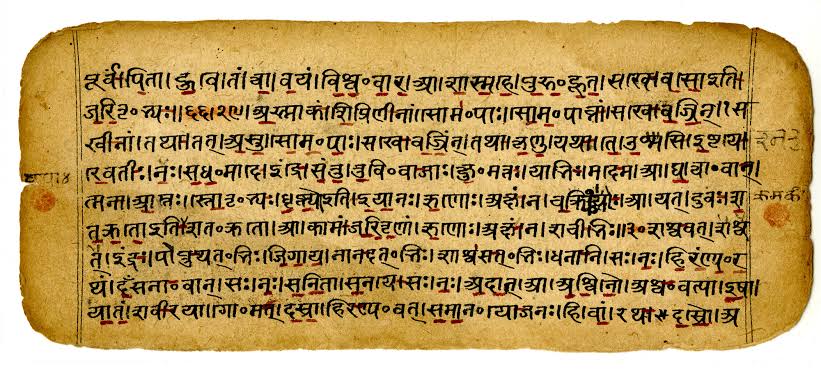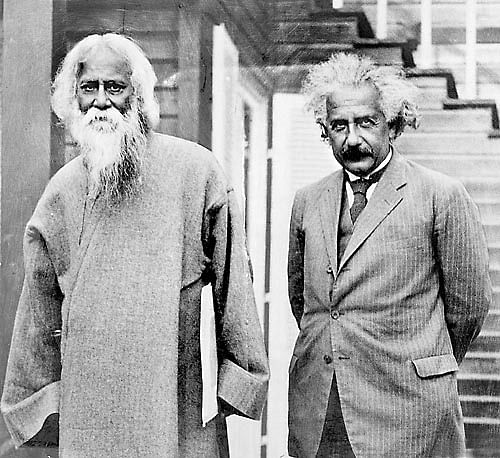
Antiquity and Origin of the Term ‘Hindu’
The anti-Hindu historians like Romila Thapar and D.N. Jha have opined that the word ‘Hindu’ was given currency by the Arabs in the 8th century.
The anti-Hindu historians like Romila Thapar and D.N. Jha have opined that the word ‘Hindu’ was given currency by the Arabs in the 8th century.

They however, do not explain the basis of their conclusion nor do they cite any evidence in support of their claim. Even Arab Muslim writers do not make such an extravagant claim.
Another theory propounded by European writers is that the word ‘Hindu’ is a Persian corruption of ‘Sindhu’ resulting from the Persian practice of replacing ‘S’ with ‘H’. Even here, no evidence is cited. 

. In fact the word Persia itself contains ‘S’ which should have become ‘Perhia’ if this theory was correct
Epigraphic Evidence,
The Hamadan, Persepolis and Naqsh-I-Rustam Inscriptions of Persian monarch Darius mention a people ‘Hidu’ as included in his empire. These inscriptions are dated between 520-485 B.C.
The Hamadan, Persepolis and Naqsh-I-Rustam Inscriptions of Persian monarch Darius mention a people ‘Hidu’ as included in his empire. These inscriptions are dated between 520-485 B.C.

Xerexes, successor of Darius, in his inscriptions at Persepolis , gives names of countries under his rule. The list includes ‘Hidu’. Xerexes was ruling between 485-465 B.C. On a tomb in Persepolis , 

in another inscription assigned to Artaxerexes (404-395 B.C.), there are three figures above which are inscribed ‘iyam Qataguviya’ (this is Satygidian), ‘iyam Ga(n)dariya’ (this is Gandhara) and ‘iyam Hi(n)duviya’ (this is Hi(n)du).
The Asokan inscriptions (3rd century B.C.) repeatedly use expressions like ‘Hida’ for ‘ India ’ and ‘Hida loka’ for ‘Indian nation’.
‘Hida’ and its derivative forms are used more than 70 times in the Ashokan inscriptions. For instance in the Jaugadha, separate rock edict II, the lines 3 & 4, read 

Evidence from the Pahlavi Avesta,
In the Avesta, Hapta-Hindu is used for Sanskrit Sapta-Sindhu, the Avesta being dated variously between 5000-1000 B.C. This indicates that the term ‘Hindu’ is as old as the word ‘Sindhu.’
In the Avesta, Hapta-Hindu is used for Sanskrit Sapta-Sindhu, the Avesta being dated variously between 5000-1000 B.C. This indicates that the term ‘Hindu’ is as old as the word ‘Sindhu.’

Sindhu is a Vedik term used in the Rigveda. And therefore, ‘Hindu’ is as ancient as the Rigveda.
In the Avestan Gatha ‘Shatir’, 163rd Verse speaks of the visit of Veda Vyas to the court of Gustashp and in the presence of Zorashtra,...
In the Avestan Gatha ‘Shatir’, 163rd Verse speaks of the visit of Veda Vyas to the court of Gustashp and in the presence of Zorashtra,...

Veda Vyas introduces himself saying ‘man marde am Hind jijad.’ (I am man born in ‘Hind.’) Veda Vyas was an elder contemporary of Shri Krishna (3100 B.C.). 

Greek Usage,
The Greek term ‘Indoi’ is a softened form of ‘Hindu’ where the initial ‘H’ was dropped as the Greek alphabet has no aspirate. This term ‘Indoi’ was used in Greek literature by Hekataeus (late 6th century B.C.) and Herodotus (early 5th century B.C.)
The Greek term ‘Indoi’ is a softened form of ‘Hindu’ where the initial ‘H’ was dropped as the Greek alphabet has no aspirate. This term ‘Indoi’ was used in Greek literature by Hekataeus (late 6th century B.C.) and Herodotus (early 5th century B.C.)

The Hebrew Bible,
The Hebrew bible uses ‘Hodu’ for India , which is a Judaic form of ‘Hindu’. The Hebrew Bible (Old Testament) is considered earlier than 300 B.C. Today’s Hebrew spoken in Israel also uses Hodu for India
The Hebrew bible uses ‘Hodu’ for India , which is a Judaic form of ‘Hindu’. The Hebrew Bible (Old Testament) is considered earlier than 300 B.C. Today’s Hebrew spoken in Israel also uses Hodu for India
The Chinese Testimony,
The Chinese used the term ‘Hien-tu’ for ‘Hindu’ about 100 B.C.11 While describing movements of the Sai-Wang (100 B.C.), the Chinese annals state that the Sai-Wang went towards the South and passing Hien-tu reached Ki-Pin.
The Chinese used the term ‘Hien-tu’ for ‘Hindu’ about 100 B.C.11 While describing movements of the Sai-Wang (100 B.C.), the Chinese annals state that the Sai-Wang went towards the South and passing Hien-tu reached Ki-Pin.
Pre-Islamic Arabic Literature,
Sair-ul-Okul is an anthology of ancient Arabic poetry available in the Turkish library Makhtab-e-Sultania in Istanbul . In this anthology is included a poem by Prophet Mohammed’s uncle Omar-bin-e-Hassham.
Sair-ul-Okul is an anthology of ancient Arabic poetry available in the Turkish library Makhtab-e-Sultania in Istanbul . In this anthology is included a poem by Prophet Mohammed’s uncle Omar-bin-e-Hassham.
The poem is in praise of Mahadev (Shiva), and uses ‘Hind’ for India and ‘Hindu’ for Indians. Some verses are quoted below: 

The same anthology has another poem by Labi-bin-e Akhtab bin-e Turfa who is dated 2300 years before Mohammed i.e. 1700 B.C. This poem also uses ‘Hind’ for India and ‘Hindu’ for Indian. The poem also mentions the four Vedas Sama, Yajur, Rig and Athar. . 

This poem is quoted on columns in the Laxmi Narayan Mandir in New Delhi , popularly known as Birla Mandir ( Temple) 



‘Hindu’ in Sanskrit Literature,
Another doubt created by the modern day anglicized historian is that the term ‘Hindu’ is not found used in Sanskrit literature. This misconception can be dispelled by quoting from Sanskrit works
As are :
Another doubt created by the modern day anglicized historian is that the term ‘Hindu’ is not found used in Sanskrit literature. This misconception can be dispelled by quoting from Sanskrit works
As are :

‘Hindu’ and ‘Sindhu’,
Another theory says that ‘Hindu’ originated from the Persian practice of replacing ‘S’ with ‘H’. This does not seem to be true as is evident from the fact that Sindh has not become Hind and both Sindh and Hind exist in Persian as well as Arabic.
Another theory says that ‘Hindu’ originated from the Persian practice of replacing ‘S’ with ‘H’. This does not seem to be true as is evident from the fact that Sindh has not become Hind and both Sindh and Hind exist in Persian as well as Arabic.

The inscriptions of Darius and Xerexes which describe India as Hi(n)du, also use the term ‘Sugd’ for Sogdiana. This ‘Sugd’ should have become ‘Hugd’ as per this theory. The Pahlavi inscription of Shahpur II, uses ‘S’ in Shakastan and Tuxaristan.
But it cannot be denied that Hindu is a form of Sindhu. It needs to be realised that this change from S to H is common in Saurashtra where Sorath becomes Horath, Somnath becomes Homnath and so on.
The form Hindu is therefore, likely to have come from Saurashtra. It should also be noted that as per the Nirukta rules of grammar, in the Vedic language, replacement of S with H is permitted.
Epigraphic evidence takes the antiquity of ‘Hindu’ back to at least 500 B.C. Use of ‘Hindu’ as part of ‘Hapta-Hindu’ in the Avesta suggests that ‘Hindu’ is as old as ‘Sindhu’ and therefore, belongs to the Vedic age.. 

.. Regarding the origin of ‘Hindu’ from ‘Sindhu’, the Saurashtran practice of pronouncing ‘H’ in place of ‘S’ provides the answer
@threadreaderapp unroll
@threadreaderapp unroll
@threadreaderapp @threader_app compile
• • •
Missing some Tweet in this thread? You can try to
force a refresh



















